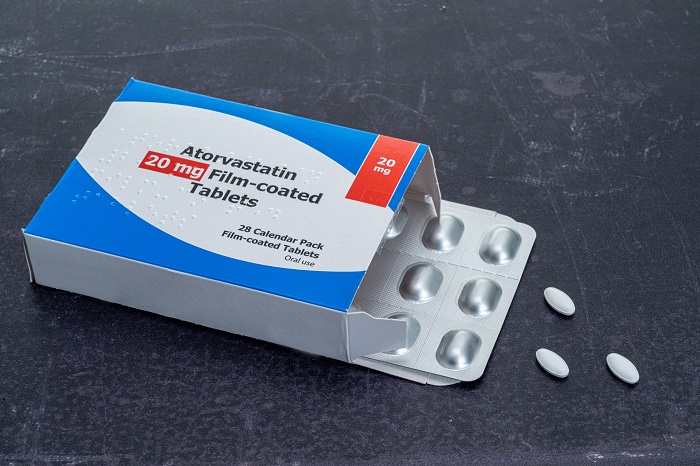Office of Research & Development |
 |


Many cases of insomnia are related to poor sleep habits, depression, anxiety, lack of exercise, chronic illness, or drug side effects. (Photo: ©iStock/Yanyong)
April 23, 2020
By Mike Richman
VA Research Communications
Insomnia, the condition in which one has trouble falling or staying asleep, is one of the most prevalent health disorders in the United States but also one of the least understood. It’s hard to pinpoint how many Veterans have been diagnosed with the condition. But a large study of more than 900 former service members showed that at least 50% experienced major symptoms of insomnia.
Long-term insomnia is linked to a greater risk of poor health outcomes, including mental health disorders and heart disease. Symptoms of insomnia include daytime drowsiness; irritability, depression, or anxiety; attention deficits; trouble falling asleep; or an inability to sleep through the night.
Dr. Elaine Boland, a research psychologist at the Corporal Michael J. Crescenz Veterans Affairs Medical Center in Philadelphia, understands that it’s critical for people with insomnia to receive treatments tailored to their needs. This is in keeping with other areas of health care that rely on a personalized, or “precision medicine,” approach. Few empirical studies have focused on precision medicine for the sleep condition, whether on a behavioral program or medication.
Boland is a strong proponent of cognitive behavioral therapy for insomnia (CBT-I). She says the program has reached “gold standard” status as a treatment for adults with chronic insomnia.
"Part of the difficulty in truly understanding insomnia is that, like many disorders, it can have various causes and presentations."
CBT-I is a six- to eight-session therapy that is aimed at changing sleep habits and scheduling factors, as well as misconceptions about sleep and insomnia that lead to sleep difficulties. Clinicians work one-on-one with patients to implement a series of strategies. These include finding the most suitable bedtime, restricting the amount of time spent in bed, and improving daytime habits.
Many cases of insomnia are related to poor sleep habits, depression, anxiety, lack of exercise, chronic illness, or certain drugs. The American College of Physicians recommends that behavioral programs, specifically CBT-I because of its potential for limited side effects, be initiated prior to sleep medications.

VA Study Documents Health Risks for Burn Pit Exposures

VA center training the next generation of researchers in blood clots and inflammation

Could cholesterol medicine reduce dementia risk in seniors?

VA Researcher Named One of U.S.’ Top Female Scientists
Last year, Boland co-authored a peer-reviewed article that elaborates on the pros and cons of CBT-I and prescription drugs for patients with insomnia (see sidebar). She focused on CBT-I as the leading behavioral treatment for insomnia and its ability to be tailored to a person’s needs. The article appeared in September 2019 in the journal Sleep Medicine Clinics.
Boland, who is also a clinical associate at the University of Pennsylvania, spoke to VA Research Currents.
VA Research Currents: You write that one-third to one-half of Americans struggle with insomnia on at least an occasional basis. Why is insomnia, one our most common health disorders, also one of the least understood?
Boland: Part of the difficulty in truly understanding insomnia is that, like many disorders, it can have various causes and presentations. Insomnia can arise from stressful events, medical and mental health conditions, and changes in daily habits or behaviors. But it can also present differently from person to person: Some people may have a hard time falling asleep, some may fall asleep but have a hard time staying asleep, some may wake hours earlier than they want or need to, and still others can have combinations of these symptoms. To really understand insomnia, we need to know more about what’s going on in the brain and body, to better analyze and develop connections between mental health symptoms and sleep disturbance, and to learn more about how these things relate to variations in clinical presentation of insomnia. Research has pushed us closer to having more answers. But the medical community still hasn’t coalesced on a singular understanding of what is happening in the body when someone is struggling with insomnia.
How does “precision medicine” come into play in treating this condition?
In our experience, precision medicine includes the choice of CBT-I versus medication. But it also involves examining whether changes to administering CBT-I may be warranted given a person’s presentation, medical and mental health history, and environment. For example, people with bipolar disorder should avoid using strategies like sleep restrictions. They would be de-emphasized in favor of something known to be highly important to bipolar disorder management, as well as sleep regulation, which is maintaining consistent daily routines. The manual for delivering CBT-I in VA uses a case conceptualization approach that focuses on delivering treatment according to the person’s presentation and a clinical assessment of how insomnia developed, as opposed to delivering sessions in a fixed manner. This is the closest guide I’ve seen to a precision medicine approach to insomnia treatment. Precision medicine in insomnia lacks a strong research base, and I hope that studies are conducted that help guide a precision medicine approach.
How does a doctor decide whether CBT-I or medication is the best targeted treatment method for the patient? Does that decision depend on the patient’s symptoms?
It’s a mixture of research and clinical judgment. Based on research and recommendations by national physician groups, starting with CBT-I is the way to go. But there are things to factor into that decision, including whether the patient is a good candidate for the therapy which, while effective, involves a lot of hard work and behavioral changes that not all people are willing or able to make. Symptoms also play a role and can help the provider know if the sleep disturbance is insomnia or is perhaps due to another sleep disorder. There are many ways in which someone can experience poor sleep, and not all of them are due to insomnia. Someone may complain of frequent awakenings in the middle of the night. But it’s possible these could be due to untreated sleep apnea, a potentially serious sleep disorder in which breathing repeatedly starts and stops. In that case, a treatment program for insomnia would not be effective.
There is a growing consensus, including an official recommendation from the American Academy of Physicians, that behavioral approaches, specifically CBT-I, should be administered before sleep medications for treating insomnia. CBT-I is perhaps the most well-researched behavioral treatment for insomnia with a high rate of efficacy. Some reports point to an 80% success rate. CBT-I may have short-term effects that are roughly equal to sleeping pills. However, the long-term effects tend to be superior, as sleep problems tend to return if a person stops taking a sleep aid. Add to that the risk of physical and psychological dependence on some sleep medications, and CBT-I becomes a more attractive option. CBT-I is not universally effective, however, and so sleep medications may be a necessary treatment for some.
What else is it about cognitive behavioral therapy that makes it an effective treatment method for insomnia?
CBT-I is effective because it targets two key areas of sleep regulation thought to be disrupted in insomnia. The first target is a physical one, which is the body’s homeostatic sleep drive. CBT-I works to strengthen and regularize the body’s own biological drive for sleep through several behavioral strategies. The second is psychological and based on classical conditioning. When people experience night after night of poor sleep, they tend to form negative associations to their bed or their sleeping environment because they spend so much time in bed fighting for sleep. Those negative psychological associations can elicit a cascade of cognitive and physiological reactions that prevent a person from getting to sleep easily. CBT-I incorporates various strategies—collectively referred to as stimulus control—that are geared toward breaking those negative associations.
How much does stress play a role in insomnia?
Stress can play a significant role, especially if it comes along with a lot of worry. Nighttime is when most people are less distracted, and it can be a vulnerable time for succumbing to the kinds of thoughts or concerns that keep people up at night. Stress can also bring physical tension that can interfere with sleep. Managing stress effectively is not only good for your overall well-being, but it can help keep sleep disturbance from worsening.
Are there common misconceptions or myths that people have about insomnia and how to deal with it?
Probably the most prevailing misconception is that if you’re struggling to sleep, you just need to try harder! The reality is that the more effort you are putting into trying to force yourself to sleep, the less likely it is that you’ll get to sleep. You may be keeping your sleep problem going. Another myth is that we all need eight hours of sleep. Eight is a good number, but not the perfect one for everyone. The National Sleep Foundation suggests a range of seven to nine hours. If you’re only getting seven or so hours of sleep per night, it doesn’t necessarily mean you have a sleep problem, if you otherwise feel good about how you’re functioning during the day. There are no guidelines on the time someone should go to bed. That depends on a lot of individual factors, including one’s internal “biological clock.” We try not to focus on specific times or numbers.
In recent years, many people with sleep problems have turned to alternative therapies, such as acupuncture, yoga, relaxation, melatonin, and herbal remedies like valerian and chamomile. What does the evidence show about these therapies?
The recently established VA/DoD Clinical Practice Guidelines for managing chronic insomnia and obstructive sleep apnea have done an excellent job of examining the evidence for or against alternative methods and synthesizing that evidence to help guide clinical decision making. For chronic insomnia, the guidelines suggest against using herbal remedies, such as valerian root or chamomile, and against taking melatonin. There isn’t enough evidence for or against other strategies like mindfulness, meditation, or yoga to make a recommendation. However, a specific kind of acupuncture–auricular acupuncture with seed or pellet attachments–is recommended as an alternative treatment for insomnia. Auricular acupuncture can produce a range of benefits, such as calming the mind and relieving pain.
When selecting a medication for insomnia, one of the most important factors to consider is the half-life of the drug—the time it takes for its concentration to drop 50%.
So says Dr. Matthew Kayser, a professor of psychiatry at the University of Pennsylvania. In an article he co-authored on precision medicine for insomnia for the journal Sleep Medicine Clinics, Kayser discussed medication options for insomnia and offered guidance on drug selection to enhance personalized care. Two VA researchers also co-authored the article (see main story).
The half-life of a sleep medication can range from 1.5 hours for a hypnotic, such as Zaleplon, to 24 hours for some benzodiazepines, a class of psychoactive drugs. However, a longer half-life can come with risks, Kayser notes.
“The primary disadvantage of a longer half-life is the potential for next-day sedation,” he writes. “Patients may be able to sleep well at night but have difficulty waking up in the morning and may not feel fully awake for several hours. Some go as far as to state that the cure is worse than the problem. The potential for over-sedation can be a safety concern, because patients who drive or operate machinery in the morning may be impaired.”
The U.S. Food and Drug Administration (FDA) has warned that certain prescription drugs can lead to sleepwalking, sleep driving, and engaging in other activities while not fully awake.
Another important factor in choosing a sleep medication, Kayser writes, is co-occurring health conditions. Eighty percent of patients with insomnia have at least one additional medical disorder. Drugs are available that can improve both insomnia and at least one other health condition, he notes.
People with sleep difficulties have a series of prescription and over-the-counter drugs to choose from. The FDA has approved sedative hypnotics, and there is off-label use of medications with sedating side effects. The main categories of insomnia drugs include non–benzodiazepine receptor antagonists (trade name example Belsomra), benzodiazepines (Xanax), sedating antidepressants (Trazodone), melatonin receptor agonists (Rozerem), antihistamines (Benadryl), and dual orexin receptor antagonists (Almorexant).
The assortment of available drugs “can make the choice of medication for an individual patient daunting,” Kayser writes.
--- Mike Richman
VA Research Currents archives || Sign up for VA Research updates